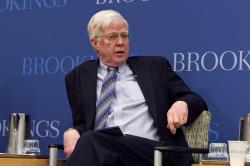The condition of America’s infrastructure has become a subject of increased public discussion in recent years. This is the result of several factors. First, there is a perception that the existing infrastructure has become badly deteriorated due to inadequate outlays for maintenance and repair and the underfunding of new investment needs. Second, the stagnate condition of the U.S. economy in the aftermath of the financial crisis has stimulated a new search for effective means of stimulus, and public works projects attract considerable attention because those expenditures generate large Keynesian multiplier effects on the aggregate economy. Third, state and local governments, the traditional sponsors of much of the infrastructure, are faced with severe funding constraints that have stimulated a search for new means of paying for future projects. Finally, the growing interest in “green growth”–the promotion of policies to tackle environmental degradation and climate change within a framework of sustainable growth–will result in increased demand for new infrastructure investments, ranging from the retrofitting of buildings, expansion of the rail network, and development of ‘smart grids’ to improving the efficiency of electricity generation.
The focus of this paper is an evaluation of some of the new approaches to the financing of infrastructure projects. They include extension of the Build America bond program that was introduced in 2009-10, proposals for an infrastructure bank, and public-private partnerships. However, a central theme of this report is that U.S. infrastructure investments are not limited by financial market constraints. State and local governments, in particular, can currently obtain long-term financing at very low rates of interest that are further subsidized through a federal income tax exemption. Instead, the more basic problem is the distorted nature of the decision-making process and difficulties of generating future revenue streams sufficient to pay for the initial capital investment, maintenance and operating costs. The decision-making process is perverted by an excessive focus on efforts to obtain free federal funding of infrastructure projects whose benefits are largely local, and the emphasis on new construction results in inadequate funding of operating costs and timely maintenance. Citizens and their representatives often favor expansion of the infrastructure, but they resist paying for their use of it and fail to undertake the required maintenance in a timely fashion. As a result, the primary need is to develop a stronger linkage between the costs of infrastructure projects and the benefits that flow from them. That means increased reliance on user fees, congestion taxes, and special tax zones as means of promoting the more efficient utilization of the infrastructure and providing adequate funding.
The paper begins by examining some evidence on basic trends in infrastructure spending and the adequacy and condition of the stock of U.S. infrastructure. We supplement that with a consideration of investments in the green economy and the experience of incorporating such spending within the 2009 federal economic stimulus program. With that assessment of needs as a background, the primary focus of the paper is on the evaluation of three new financing options for public infrastructure: Build America bonds, an infrastructure bank, and public-private partnerships.


